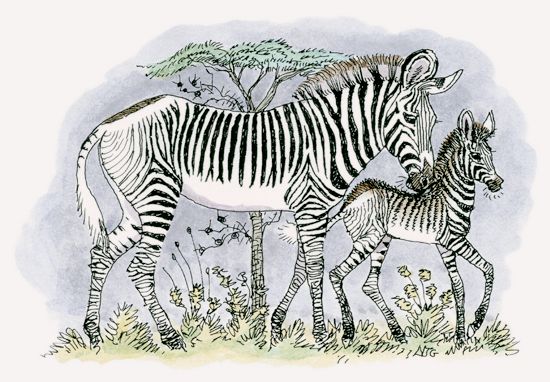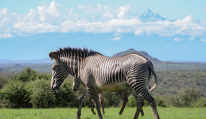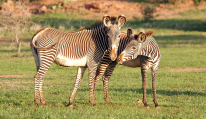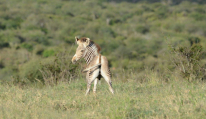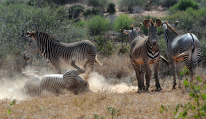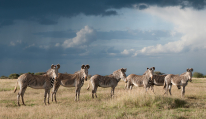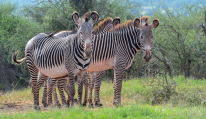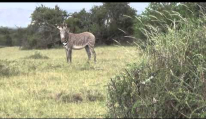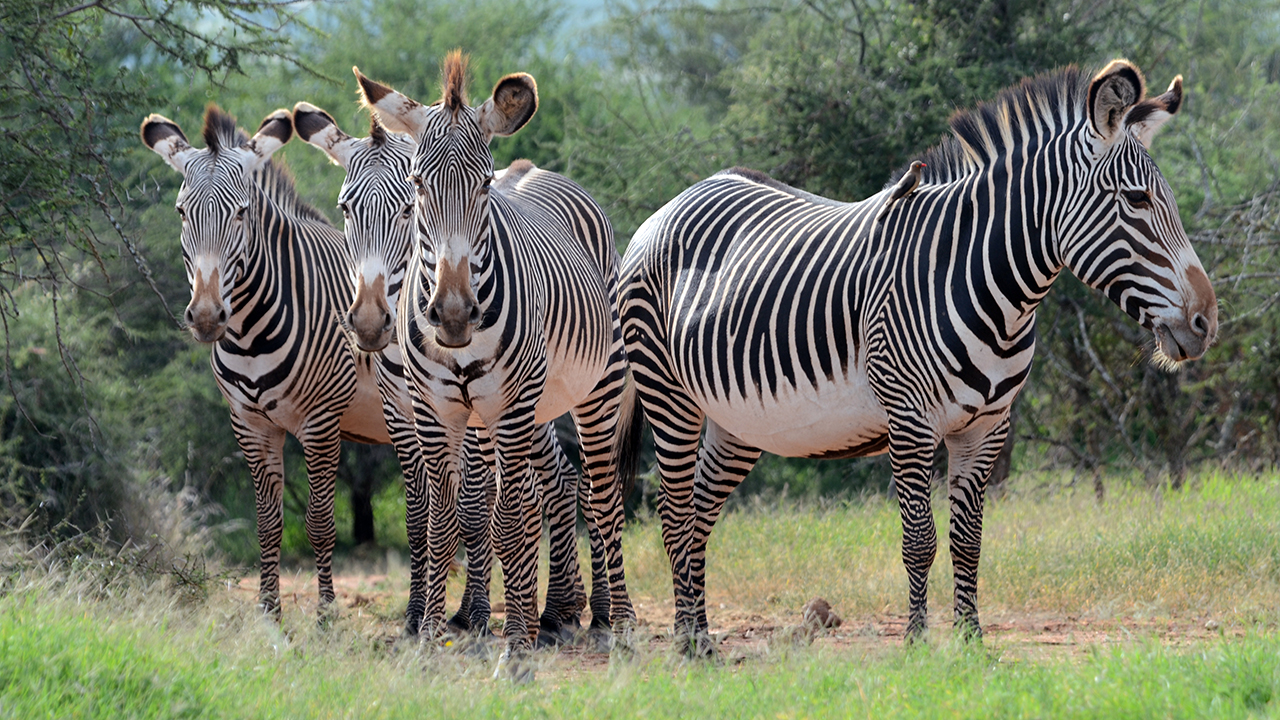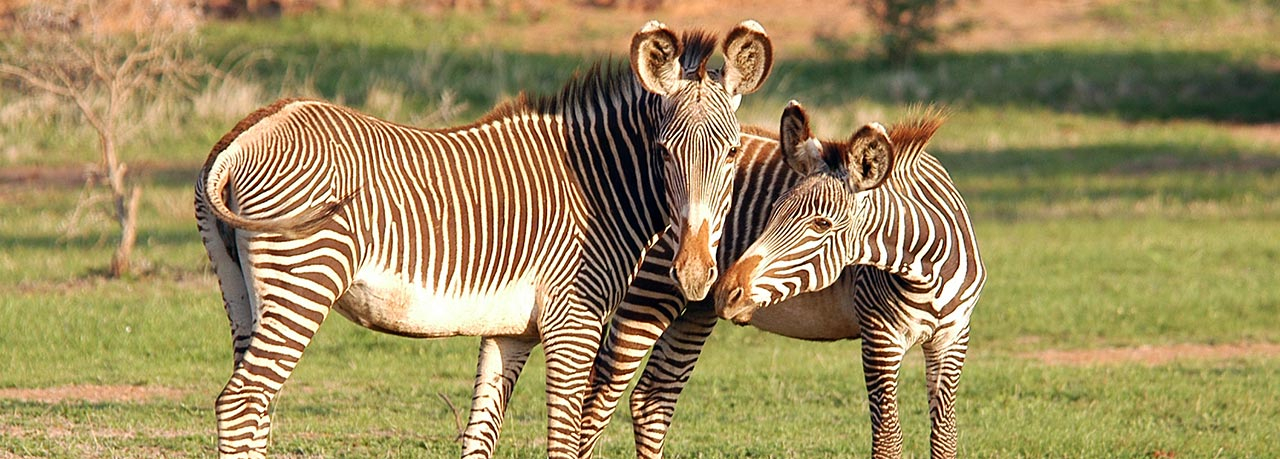Social Structure
Although Grevy’s zebras are social animals, their social bonds are much more fluid than those of the plains zebra. Plains zebras interact in fairly stable harems, but Grevy’s zebras form groups where the composition changes nearly every day. Group sizes can sometimes exceed 150 individuals, although smaller groups of less than 20 are much more common. Mothers with foals tend to congregate in nursery groups. Foals don’t always travel with their mothers and might stay with several other foals in a “kindergarten” watched over by an adult. These groups allow the mothers to travel greater distances to find more resources. Males live either in loose, roving bachelor herds or as lone territorial males. Although territorial males are often tolerant of bachelor males, they will violently chase them off when females come around.
Communication
Grevy’s zebras communicate using a wide range of noises and postures. Territorial males vocalize with loud braying and squeaking to protect their territory or assert dominance. Bachelor males and females vocalize less frequently, although lactating females often call when they become separated from their foals. All zebras vocalize when squabbling with others or when fleeing a predator. Grevy’s zebras also communicate using olfactory cues. A male is able to determine when a female is in estrous, and territorial males advertise their presence to other males by repeatedly defecating at certain spots along their territorial boundaries. Territorial males also display dominance by rearing up on their hind legs.
Behavior
Grevy’s zebras spend the heat of the day resting—preferably in the shade—and drinking water. They prefer to drink during the four hottest, brightest hours of the day, possibly to avoid predators. However, in areas where cattle monopolize water holes, the zebras are forced to drink at night. Grevy’s can range up to 22 miles (35 km) from water, even during the dry season. Lactating females with foals, however, need to drink every day and stay close to open water sources where they can watch for predators. If necessary, Grevy’s zebras will dig in dry riverbeds with their hooves to find water.
Conservation
The Grevy’s zebra is listed as an endangered species on the International Union for Conservation of Nature (IUCN) Red List. Kenya has banned hunting them since 1977, but these zebras still compete with people and livestock for water and grass. Although they are protected in Ethiopia, poaching with semi-automatic weapons is still a major concern.The Gervy’s zebra population in Laikipia is growing for two main reasons: Competition with livestock in northern Kenya has pushed them southward; and the zebras have been successful in reproducing, thanks to the willingness of ranchers in Laikipia to tolerate their presence.

